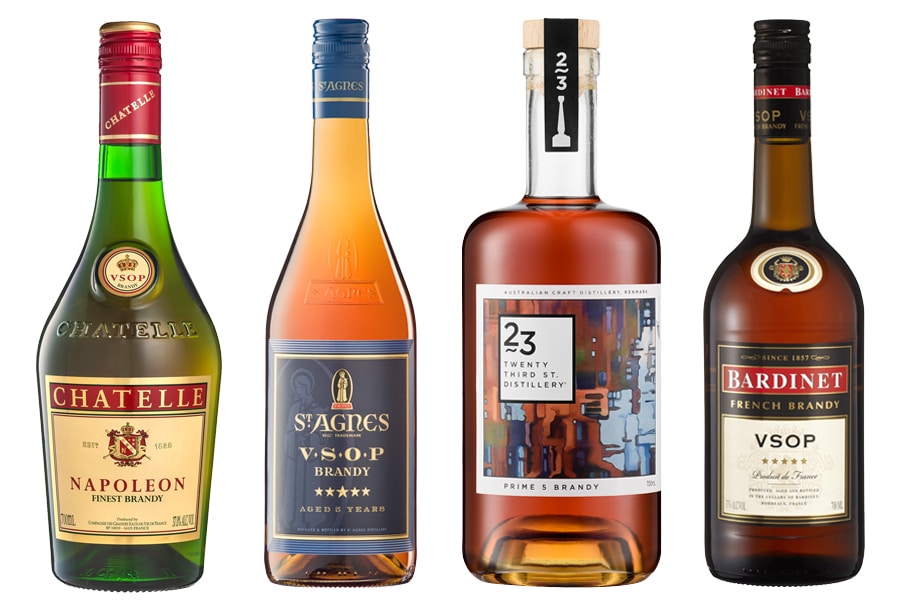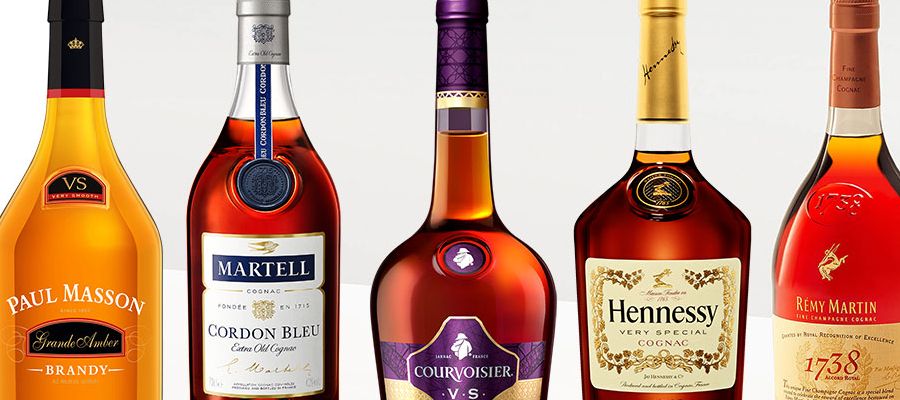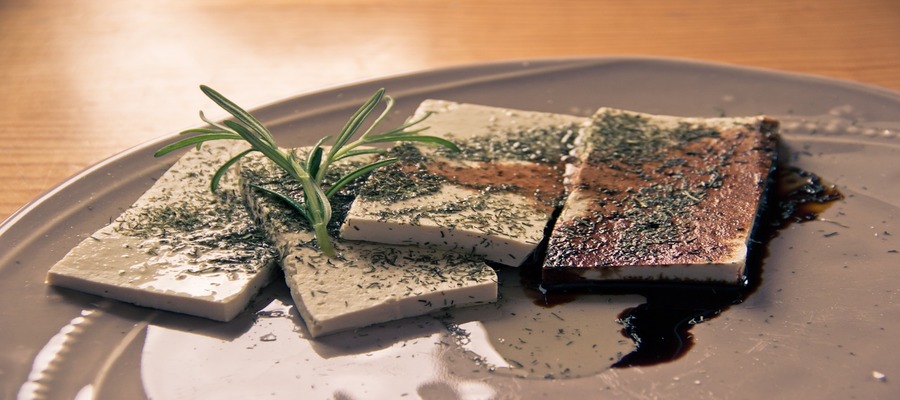Brandy is a popular dark liquor that is in fact “burned wine” or in other words, a liquor distilled from wine. It is different from other liquor. If you want to know why read this contribution. It can also be distilled from other fruit wines like apples and pears. Brandy is not a whiskey. Amongst the multiple types of brandy that are available, the most popular one is Cognac (also known as Hennessy). Cognac is made from special grapes that are native to a particular region in France. After a long day of work, coming home and cozying up to a warm glass of brandy is a feeling unlike any other.
| Brandy | |
|---|---|
| Definition | Spirit distilled from fermented fruit |
| Origin | Various countries worldwide |
| Main Ingredients | Fruit (grapes, apples, pears, etc.) |
| Alcohol Content | Typically ranges from 35% to 60% |
| Aging Process | Often aged in oak barrels |
| Types | Grape brandy, fruit brandy, pomace brandy, and more |
| Flavor Profile | Rich, complex, and aromatic |
| Serving Temperature | Room temperature or slightly chilled |
| Glassware | Snifter or tulip-shaped glass |
| Popular Brands | Hennessy, Rémy Martin, Courvoisier, Torres, St-Rémy, etc. |
| Culinary Uses | Cooking, marinating, and dessert pairing |
| Drinking Methods | Sipping neat, in cocktails, or as a base for mixed drinks |
| Regions of Production | France, Spain, Italy, USA, and others |
| Pairings | Cheese, chocolate, dried fruits, cigars, etc. |
| Shelf Life | Does not spoil, but flavors may change over time |
| Cultural Significance | Traditional drink in various countries, often associated with sophistication and celebration |
Where can I buy brandy?
Visit our food database and find a seller that suits you. We have a wide range of sellers and products.

Or just order your favorite bandy from Amazon.
How is brandy made?
It is a distillate of wine. The basis for distillation is grapes. EU-wide regulations govern which spirits may call themselves brandy. For example, 100% of the alcohol must come from a finished vinified wine. This may be white wine or red wine or a mixture. The wine distillates must also be stored for a certain time before bottling: at least six months in small wooden barrels (with a capacity of less than 1,000 liters) or at least twelve months in larger wooden barrels. As a rule, however, brandy matures for much longer, often years to decades. Flavoring is not allowed, but sometimes a very small percentage of caramel is added for coloring.
Brandy, brandy, cognac - what's the difference?
For a long time, cognac was considered a collective term for wine brandies, but then the protected designation of origin came into use. Today, a Cognac must come from the region of the same name in France and is subject to even more guidelines (approved grape variety, distillation method, minimum age for classification as VS, VSOP, XO, etc.). Slightly related to Cognac is Armagnac from a different region and with different types of distillation. Weinbrand is the German word, but theoretically a German Weinbrand is also a Brandy. Indeed, that is now the generic term for all brandies. However, some insist that the term is mainly used for the brandy from Spain. In addition, there is the brandy from Italy and other countries such as Greece and Portugal, among others. The brandy from Germany is also associated with some regulations. By the way, brandy is not a synonym for brandy, because the latter refers to all distilled spirits, including those made from raw materials other than grapes.
What does brandy taste like?
The raw material makes itself felt. Brandy often smells and tastes fruity, although one does not necessarily always think of grapes. The longer the wine distillate has been allowed to mature in oak barrels, the more other tones join in. Thus, a brandy may taste nutty or spicy, woody or sweet. If you're looking for a list of famous brandy drinks, click here.
How do you drink brandy?
Like Cognac, German brandy or Spanish brandy is drunk in a short, bulbous glass with a wide base that tapers slightly toward the top. The Cognac swirl both allows the spirit to release its aromas and condenses them before they reach the nose and mouth. Brandy glasses are simply a must for proper tasting. Premium quality brandies should be drunk neat, and they don't need to "breathe" like wine, nor do they like ice. Younger products can be used for cocktails with brandy. The ideal drinking temperature for brandy is room temperature, optionally in a pre-warmed brandy glass. When tasting around 60 cl of brandy, first sniff and then enjoy sips at a time.
The internationally appreciated classic: Spanish Brandy
Brandy from Spain has an incredibly long tradition. It is produced mainly - but not only - in Andalusia in the city of Jerez de la Frontera, where sherry is at home. Such a Brandy de Jerez is stored according to the solera method. Young, medium-long matured and old wine distillates come together to obtain a blend rich in finesse at the end. Traditional brandy from Spain is sometimes allowed to rest for a long time, which can be recognized by classifications such as Reserva and Gran Reserva. Well-known brands of brandy from Spain include Osborne, Cardenal Mendoza, Gran Duque d'Alba and Lepanto.
The popular alternative: German brandy
Brandy from Germany has also been produced for centuries, and usually with great attention to detail, on a rather small scale and according to unchanged recipes. Brandy from Germany belongs for many to a cozy evening, gladly as a cigar brandy or after dinner. If you want to buy noble brandy from Germany, legendary brands such as Chantre, Asbach, Mariacron and Jacobi are recommended.
Types of Brandy
Have you ever seen a bottle that states VS (Very Special) or has three stars? That is a unique symbol or term to tell you how long it has aged. If it has either of the two labels, it means that the brandy has been aging for at least two years. VSOP (Very Special Old Pale) has aged for at least four years while XO (Extra Old) has aged for at least six years. Hors d’age is a very special brandy that has aged for at least 10 years. This one typically has the year it was made on it. Brandy Croft is one of the oldest types of brandy and is produced in a "Croft House". It is produced from the finest wines and a well-established formula, making Brandy Croft a renowned fine brandy. In terms of taste and aroma, Brandy Croft boasts a mild taste and an earthy aroma. Most brandies typically range from 70-120 proof meaning that 35%-60% of the drink is alcohol; so in comparison to beer or wine, it is pretty strong. It is also most times stronger than, vodka whose proof range from 90-100 meaning 45%-50% is alcohol.
How does it look?

Brandy’s golden brown color looks rich and makes you feel just like that when sipping it. The color is derived from the aging process or added after to deepen or enhance it. People typically enjoy their brandy as is, but if you aren’t a fan you can add it to a cocktail. Popular cocktails include the hot toddy and dark and stormy. Some also recommend drinking it with citrus drinks since the combo is perfect- even a quick squeeze of lime or wedge will do. You can also try different temperatures since it influences the flavor notes that come out.
They say the smoother the better and this drink is no different. The longer the aging process, the smoother and more pronounced the flavors are. Now that you have expanded your knowledge, you can properly enjoy your favorite brands. Or, take a trip down the brandy aisle and pick up your very first bottle to impress your guests and family.
Is brandy a strong alcohol?
Brandy is a type of spirit that is made by distilling wine. It is typically aged in oak barrels, which can give it a rich, complex flavor. The alcohol content of brandy can vary, but it is generally considered to be a strong alcohol, with an average ABV (alcohol by volume) of around 40%. This is similar to the alcohol content of other spirits such as whiskey and vodka. However, the strength of brandy can vary depending on the specific type and how it is made. Some brandies may have a higher alcohol content, while others may be lower. It is important to be aware of the alcohol content of any beverage you are consuming and to drink responsibly.
Is brandy sweet or bitter?
The flavor of brandy can vary depending on the specific type and how it is made. Some brandies may have a sweet flavor, while others may be more savory or even bitter. The sweetness of brandy can come from the grapes used to make the wine that is used to produce the spirit, as well as from any added sweeteners or flavors that may be used during the distillation process. Brandy can also be aged in oak barrels, which can impart flavors of vanilla, caramel, and other woody or spicy notes. The flavors of brandy can be influenced by the type of grapes used, the region where the grapes are grown, and the aging process. Some brandies may be made using a blend of different grapes or may be aged for different periods of time, which can also affect their flavor profile.
Is brandy healthy to drink?
Like any alcoholic beverage, brandy should be consumed in moderation as part of a healthy lifestyle. The World Health Organization recommends that adults should not consume more than one standard drink per day for women and two for men, and that it is best to have at least two alcohol-free days each week.
Moderate alcohol consumption has been associated with some potential health benefits, such as reducing the risk of heart disease and stroke. However, heavy or binge drinking can have negative health consequences, including an increased risk of injury, high blood pressure, liver disease, and certain types of cancer.
It is important to keep in mind that alcohol is a psychoactive substance that can impair your judgment and coordination, and that the risks of consuming alcohol, including brandy, may outweigh any potential benefits. It is always important to drink responsibly and to be aware of the potential risks associated with alcohol consumption.
Is brandy stronger than rum?
The strength of brandy and rum can vary depending on the specific type and how they are made. In general, brandy tends to have a higher alcohol content than rum.
Rum is a type of spirit that is made from sugarcane or molasses, and it can have a wide range of alcohol contents. Some rums may have an alcohol content as low as 30% ABV, while others may be as high as 50% ABV or even higher. The strength of rum can depend on the specific type and how it is made, as well as the region where it is produced.
It is important to be aware of the alcohol content of any beverage you are consuming and to drink responsibly.
Is brandy drank cold or warm?
Brandy can be enjoyed at a variety of temperatures, and the best temperature for drinking brandy depends on personal preference and the specific type of brandy. Some people may prefer to drink brandy chilled, while others may prefer it at room temperature or slightly warm.
Many people believe that brandy tastes best when served at room temperature or slightly warm, as the heat can help to release the flavors and aromas of the spirit. If you prefer your brandy warm, you can gently heat it in a small saucepan or in a microwave-safe glass. Just be careful not to heat the brandy too much, as this can cause it to become overly hot and lose some of its flavors and aromas.
On the other hand, if you prefer your brandy chilled, you can refrigerate it for a few hours before serving, or you can add ice to your glass. Keep in mind that adding ice to your brandy may dilute the flavor of the spirit, so you may want to use fewer ice cubes or consider using larger ice cubes that melt more slowly.
Ultimately, the best temperature for drinking brandy is a matter of personal preference. Experiment with different serving temperatures to find what you like best.
Is brandy full of sugar?
Brandy typically does not contain a significant amount of sugar. The sugar content of brandy is largely dependent on the grapes used to make the wine that is used to produce the spirit, as well as any sweeteners that may be added during the distillation process.
During the fermentation process, the natural sugars in the grapes are converted into alcohol. While some brandies may be made using grapes that are naturally sweeter, most brandies do not have a high sugar content.
That being said, some brandies may be flavored with added sweeteners or other ingredients, which can contribute to the overall sweetness of the spirit. It is always a good idea to check the label or ask the manufacturer if you are concerned about the sugar content of a specific brand of brandy.
Is brandy a stimulant or depressant?
Alcohol, including brandy, is a central nervous system depressant, which means that it can slow down brain activity and have a calming effect on the body. When consumed in moderation, alcohol can produce feelings of relaxation and well-being. However, when consumed in large amounts or when consumed rapidly, alcohol can have sedative effects, impairing judgment and coordination and increasing the risk of accidents and injuries.
It is important to note that alcohol can affect people differently, and the effects of alcohol can vary depending on the individual's age, weight, and other factors. It is always important to drink responsibly and to be aware of the potential risks associated with alcohol consumption.
Can you get drunk on brandy?
Yes, it is possible to get drunk on brandy, as with any alcoholic beverage. Brandy is a type of spirit that is made by distilling wine, and it typically has an alcohol content of around 40% ABV (alcohol by volume). This is similar to the alcohol content of other spirits such as whiskey and vodka.
The effects of alcohol, including brandy, depend on a variety of factors, including the individual's age, weight, and overall health, as well as the amount of alcohol consumed and the rate of consumption. Consuming large amounts of brandy or consuming it quickly can increase the risk of becoming intoxicated or drunk.
It is important to be aware of the alcohol content of any beverage you are consuming and to drink responsibly. It is never safe to drink and drive, and it is important to be aware of the potential risks associated with alcohol consumption, including the risk of addiction and negative health consequences.
Does brandy go with Coke or Pepsi?
Brandy and Coke/Pepsi is a mixed drink that is made by combining brandy with Coca-Cola. While this combination is not for everyone, it is a popular mixed drink that is enjoyed by many people around the world.
To make a brandy and Coke, you will need to mix equal parts brandy and Coke in a glass with ice. You can also add a squeeze of lemon or lime juice to the drink if you like. Some people may prefer to use a different type of cola, such as Pepsi, or to add additional ingredients, such as a splash of grenadine or a few dashes of bitters.
The taste of brandy and Coke can vary depending on the specific type of brandy and Coke that you use, as well as the proportions of the ingredients. Some people may find the combination to be sweet and refreshing, while others may not care for the taste. Experiment with different types and proportions of brandy and Coke to find what you like best. As with any alcoholic beverage, it is important to drink responsibly and be aware of the potential risks associated with alcohol consumption.
Should you put ice in brandy?
Whether or not to put ice in brandy is a matter of personal preference. Some people may prefer to drink their brandy chilled and may choose to add ice to their glass, while others may prefer to drink it at room temperature or slightly warm.
If you do decide to add ice to your brandy, keep in mind that the ice can dilute the flavor of the spirit. You may want to use fewer ice cubes or consider using larger ice cubes that melt more slowly to minimize this effect.
It is also worth noting that some people believe that adding ice to brandy can dull the flavors and aromas of the spirit, and that it is best to enjoy brandy at room temperature or slightly warm to fully appreciate its flavors and aromas. Ultimately, the decision to add ice to brandy is a matter of personal preference, and you should feel free to experiment to find what you like best.


